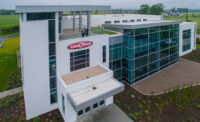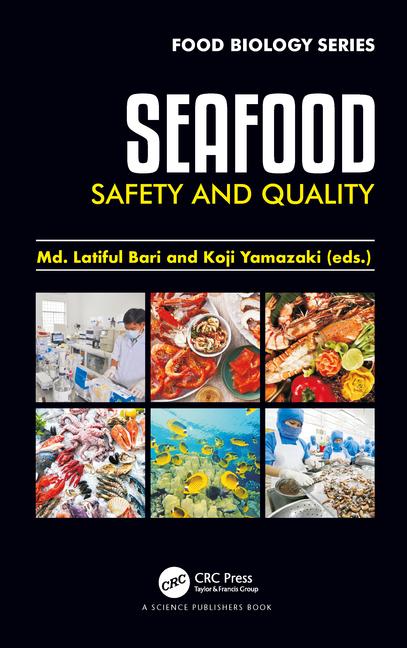
When historians look back on the Year 2008, they might tell our descendants that many people learned serious lessons about the potential negative consequences of taking risks. Because of poor business or poor judgment, many Americans this year have lost their homes, livelihoods or substantial nest eggs. There hasn’t been much reward in 2008 for those who’ve taken risks in real estate, the stock market or other financial systems earlier this decade.
Yet, here and there, if one looks hard enough, bright spots emerge, particularly in the business community. One such bright spot has been Lansing, Ill.-based deli- and specialty-meat processor Land O’Frost. Its vision and entrepreneurial culture over 50 years, and specifically the modifications the company made to its core strategies during the last seven, has allowed it to navigate quite well through challenging business times.
Leap of faith
Every significant change requires a catalyst — something that takes the situation, adds a different dimension and boosts the results far beyond original expectations. Land O’Frost, as it entered 2001, was chugging along under the watchful eye of Paul Van Eekeren, second-generation family owner of the business. His father, Antoon, had founded the business in 1958, and Paul had it growing at a nice clip through the 1990s with an emphasis geared more toward private-label business.That year, however, Paul Van Eekeren passed away, and his wife, Donna, assumed leadership of the business. David Van Eekeren, Paul and Donna’s son and current president of Land O’Frost, says his father’s death was one linchpin to the recent success of the company.
“Under the leadership of Donna, we said, ‘OK, let’s refocus, let’s re-energize, focus on the brand and keep going,’” he explains. “[My father’s death] was obviously devastating, but at the same time, it had a company-changing effect.”
David points to the fact that without that refocus, the company might not have made some risky decisions in the short term that ended up paying off today. Land O’Frost exited some businesses, such as shelf-stable meals, which Paul Van Eekeren had developed from the ground up.
“That was one of my dad’s babies,” David says. “He started that business, he was behind it, and unfortunately it had run its course for us. So we had to make the decision to exit a business that he created for us — which is a tough thing to do with the legacy — and to walk away from that legacy.”
It was a risk Land O’Frost believed it had to take in order to keep the business on the correct path. Two major shifts in strategy (tied together) would define the next five years and allow the company to jump from the eighth-ranked deli-meat brand in 2001 to No. 3 overall this year (according to A.C. Nielsen data supplied by Land O’Frost). Hindsight may be 20/20, but Donna Van Eekeren, chairman and CEO of Land O’Frost, says the risks had to be taken.
“When you’re changing and growing, you have to take those risks in order to grow,” Donna says. “Standing still is going backward.”
Penny smart, pound … smart
Instead of standing still, Land O’Frost charged ahead with its plan to shed its private-label business entirely and focus on building the Land O’Frost retail brand. The Land O’Frost brand was not new, but under the previous generations of the Van Eekeren family, it had not been a top priority in comparison.“When my grandfather started the business, we had the private-label and the brand Land O’Frost,” David says. “At that time, the brand Land O’Frost was really a frozen line of meals for the local bar trade in Chicago. He morphed that into lunchmeat under the brand, but also did it for private label, which ended up growing faster than the brand. … We never had much more than 20 points ACV penetration, so [our brand was] pretty regional until Premium came along.”
Sub-brands such as Premium, Deli Shaved, Taste Escapes and others were created to give consumers a wide variety of products from which to choose. Land O’Frost geared its brand toward bringing high-quality, high-value lunchmeats to families, particularly those with children. It launched a youth-sports program that sponsored baseball and soccer teams across the country, getting the word out about Land O’Frost products (see sidebar, “Supporting the team(s),” on page 26).
The real rocket booster that launched Land O’Frost’s success came in the form of the company’s “1 Lb. Premium” product, which struck a positive nerve with the company’s target audience.
The Premium sub-brand was not a new product when Land O’Frost embarked upon its reassessment period earlier this decade. In fact, “1 Lb. Premium,” as it is known around the Land O’Frost facilities, was introduced in 1990 under the Land O’Frost brand.
“We actually started the category — there was nothing out there in thin-sliced in a one-pound package prior to that, and a one-pound zipper package at that,” Donna explains. “So we started the category, which is a wonderful place to be, obviously.”
Yet, in similar fashion to the road traveled by many groundbreaking products, Premium had its work cut out for it at the start, explains David Van Eekeren.
“It took five or six years before it really gained a foothold,” he says. “Where we got it placed, it was an immediate success, but convincing retailers was challenging. We had a company history of being a private-label company, so convincing retailers that our brand could be successful — not just the products under their brand — was a challenge.”
Land O’Frost was the 15th-ranked brand in the category at the time of Premium’s launch, David says, but once the company convinced enough retailers of the product’s value proposition, it skyrocketed.
“It is not the standard lunchmeat,” he says. “It’s a 10-item line, so you’ve got several flavors and varieties of ham, turkey and chicken in the line that make it a pretty broad breadth of products.
“The real go-to-market strategy is the value. It’s a high-quality, value product that consumers can buy in a reclosable package that is a single package and pretty eco-friendly as well.”
Special delivery
Although the company exited the private-label business, Land O’Frost didn’t outright shed each one of what David Van Eekeren calls its “legacy businesses” during its reassessment period. One longtime segment that Land O’Frost placed a renewed emphasis on is specialty meats.Land O’Frost has long developed a great reputation for supplying meat products as industrial ingredients to retailers, food processors and foodservice companies across the country. In fact, this year, Land O’Frost won a supplier of the year award from Cargill for a diced ham ingredient that Cargill uses in an omelette type of product. David says the company is particularly proud of its abilities in this segment.
“Overall, Land O’Frost has a 99.97 percent in fulfill rate,” he says. “So, less than .03 percent of the time do we short an order.”
Tom Rose, director of the Specialty Meats division for Land O’Frost, says that efficiency has helped bolster the company’s reputation in this realm.
“It’s not made to inventory, so when we can say that Specialty Meats delivers over 99 percent on time and complete on a make-to-order basis, that’s tremendous,” he explains. “We’re not an issue for customers: They order it and know it’s going to come in, and they can tend to things that are problems, because we’re not a problem for them.”
In addition to that reputation, Land O’Frost can boast an excellent food-safety program headed by Dr. John Butts, vice president of research, which has helped the Specialty Meats division grow in today’s marketplace.
“We’ve gone from an opportunistic kind of sales pitch to a more strategic type of sale, and we’ve concentrated mostly on chain restaurants and food manufacturers,” says Rose, who adds that the majority of the business is customized products tailored toward the customers’ end use.
“Probably the most important thing, when we start a relationship is knowing how the product is going to be used and what the function is that they’re going to put it through,” Rose says. “There are different requirements if you’re putting it through a filling operation that is going to beat it up, versus a slicing operation, versus a freeze-and-thaw operation.”
The division’s fill rate and ability to meet the needs of its customers has been engrained into the culture of the Specialty Meats group. Simply put, Rose says, “we don’t short orders.” And the culture inside the Specialty Meats division is a microcosm of the company’s overall culture.
50 years of family culture
Donna Van Eekeren is proud of the company’s success and the rewards gained from taking significant risks earlier this decade. However, she believes that, without a doubt, the company culture at Land O’Frost enabled it to change its strategies and focus so successfully.“To me, [culture] is absolutely critical,” she adds. “We are a family company, we treat our employees like family, and that’s really important to us. … A good portion of our success has come from the fact that we let people grow and be creative and let them use their talents appropriately. That’s a huge part of our opportunity in the future to grow, and to continue to bring on young people who will help us grow the company.”
It’s a corporate mantra that is carried throughout all three Land O’Frost facilities over the new “Land O’Frost TV,” a recently launched communication tool that allows every employee to feel as though they are a part of every success, as well as part of the 50-year history of the company. Of all the strategies that were modified after the death of Paul Van Eekeren earlier this decade, the company’s overarching culture — another legacy Paul left behind — was left mostly intact.
“That has been historically part of who we are: being innovative and letting smart people do their jobs well,” Donna says.
Innovative thinking and an entrepreneurial spirit,which fueled a calculated, though risky strategy transformation, have Land O’Frost reaping big benefits in the present, and well-aligned for future rewards.
Support the team(s)
During his recent visit to the Land O’Frost’s Lansing, Ill., facility, Andy Hanacek, executive editor of The National Provisioner, discussed with David Van Eekeren, president, and Donna Van Eekeren, chairman & CEO, the company’s family focus and its unique marketing strategy of sponsoring youth athletics teams across the country as a way to increase brand awareness.Hanacek: What would you say is the key target of Land O’Frost’s marketing and advertising initiatives?
David:Primarily, families with kids make up our core market. That’s one of the reasons we sponsor youth sports, a phenomenal initiative we started in 2002. And that has been a really fun initiative. We use a company to help us get our youth sports efforts out, and we hit a lot of markets.
Donna:This is probably one of the neatest things we’ve ever done. It’s a combination of knowing you’re doing something good for the community and for the brand. It’s not quantifiable — we can’t measure it and say that we know we have grown because of this. But when you see these kids and the smiles on their faces when they’ve achieved something by being in this sports program, it’s really, all around, a great program.
David:We cover roughly 10,300 teams around the country — 110,000 kids in 20 different markets. And this is really a grassroots effort trying to hit families. We’re talking to the families about the product line, the value we add. But the key thing is that we’re giving the children an opportunity to participate in the youth sports programs.
Hanacek: How does Land O’Frost determine which teams to sponsor when it finds a league?
David:If a team [or league] has a local sponsor that has had a team for 10 years or something like that, we don’t want to bump that sponsor. But if they have a need for other sponsors, we’re willing to fill it. So in some [areas], we’re sponsoring 10 teams, and in others, we’re sponsoring 30 or 50. It’s really neat and a fun thing, because, to see all the pictures we get is amazing. A friend of mine just sent me pictures — we have sponsored his son’s team since the beginning — he sent me a framed set of photos from his son’s teams through all the years we sponsored it.
Hanacek: What I find interesting about the photos, and everyone has seen this type of thing before, is that you might walk into a community business that has a couple local teamphotos on the wall. But you walk into this Lansing facility, and there are hundreds of team photos from across the country. But you’re also helping out local teams as well?
David:When you talk about employees and look at the Chicagoland market, we did hit places where our employees live. That was one of the core things in all three of our facilities — we want to be there for our employees as well. So it’s a multifaceted approach.
Hanacek: How does the relationship work between Land O’Frost and the assisting company?
David:They are essentially a facilitator. They hit every one of the fields, but they are really a neat company. They act on the behalf of Land O’Frost as if they are Land O’Frost employees. So they walk in and say they are with Land O’Frost, rather than their company. We treat the owner of the company as though he is one of our employees as well. It truly is a great relationship and a great company to work with.
Hanacek: It’s definitely a unique way to get the word out about your product and brand.
David: It goes right back to the family-values thing as well. We’re all about selling to families, giving them a good value. And how better to tell them about it than to put it on the back of their kids’ shirts?
Hanacek: In addition to putting the smiling pictures of your children, nieces and nephews on the company’s semi-trucks?
David:Yes, exactly.





Report Abusive Comment